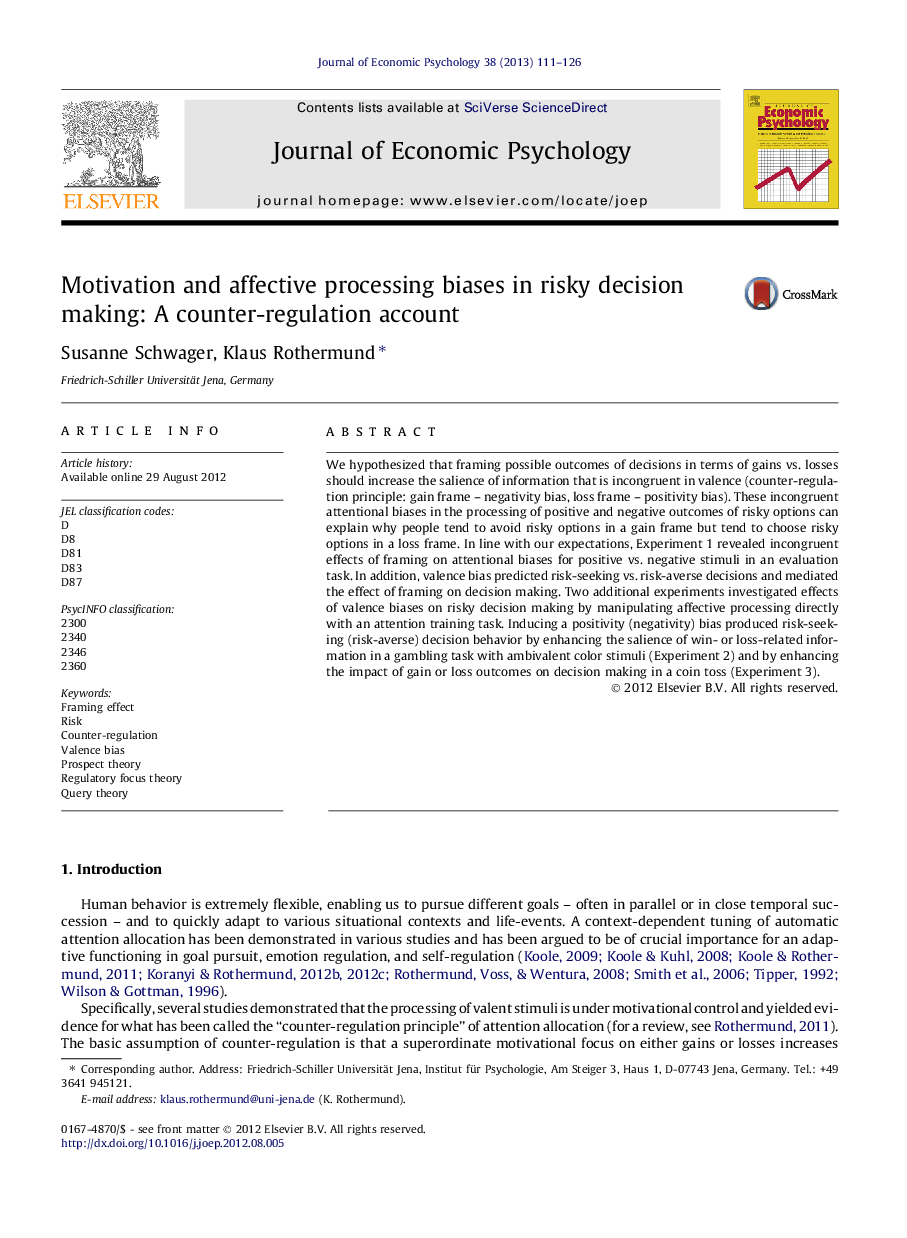| Article ID | Journal | Published Year | Pages | File Type |
|---|---|---|---|---|
| 884978 | Journal of Economic Psychology | 2013 | 16 Pages |
We hypothesized that framing possible outcomes of decisions in terms of gains vs. losses should increase the salience of information that is incongruent in valence (counter-regulation principle: gain frame – negativity bias, loss frame – positivity bias). These incongruent attentional biases in the processing of positive and negative outcomes of risky options can explain why people tend to avoid risky options in a gain frame but tend to choose risky options in a loss frame. In line with our expectations, Experiment 1 revealed incongruent effects of framing on attentional biases for positive vs. negative stimuli in an evaluation task. In addition, valence bias predicted risk-seeking vs. risk-averse decisions and mediated the effect of framing on decision making. Two additional experiments investigated effects of valence biases on risky decision making by manipulating affective processing directly with an attention training task. Inducing a positivity (negativity) bias produced risk-seeking (risk-averse) decision behavior by enhancing the salience of win- or loss-related information in a gambling task with ambivalent color stimuli (Experiment 2) and by enhancing the impact of gain or loss outcomes on decision making in a coin toss (Experiment 3).
► We examined the impact of valence biases in affective processing on risky decisions. ► Gain/loss framing induces a positive/negative outcome focus. ► Valence biases mediate framing effects on risk tendencies. ► Framing produces a reversed valence bias due to counter-regulation (gain frame/negativity bias, loss frame/positivity bias). ► Valence biases affect perceived probabilities of gains/losses and increase impact of congruent outcomes in decision making.
